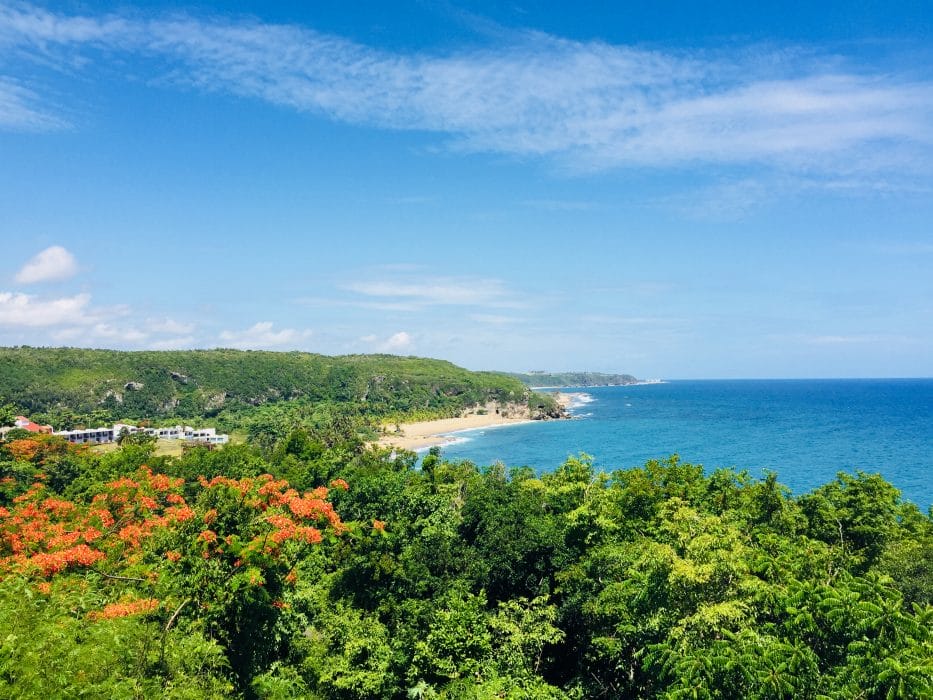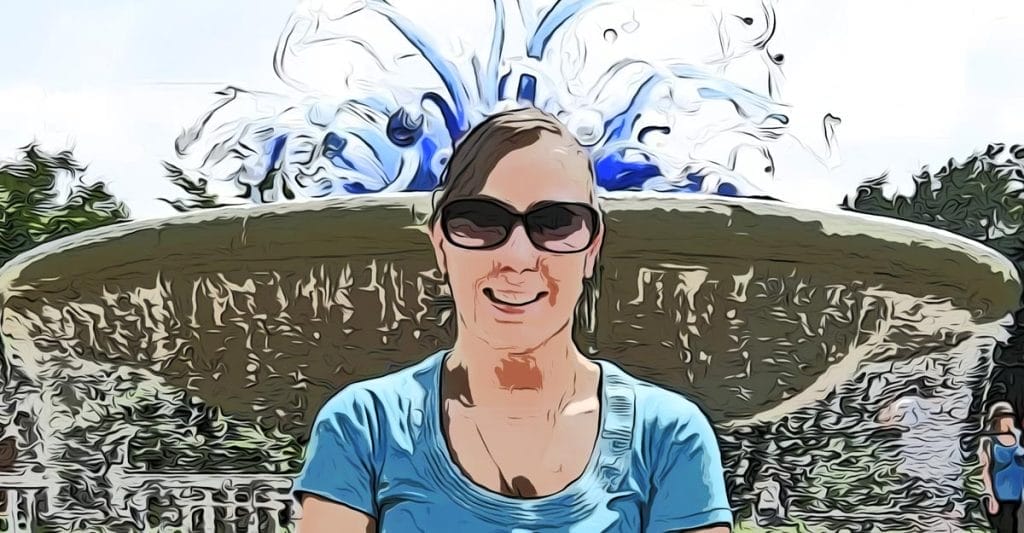The following is from “Full Measure with Sharyl Attkisson.” Watch the video of the story by clicking the link at the end.
We begin with an examination of a U.S. border that you might not have given much thought to. Like our Southern border with Mexico, it’s the target of nonstop efforts by drug traffickers, human smugglers and possibly even terrorists. But this U.S. border is in the Caribbean. And the job of guarding it is arguably even more complicated.
Our Caribbean journey begins at the San Juan, Puerto Rico seaport with a ferry that comes in three times a week from the Dominican Republic. It carries up to a thousand passengers and cargo including vehiclesall getting their last look before entering the U.S.
Sharyl: How does that make it easier for smugglers, the fact that Puerto Rico is out here but it is a US territory?
Roberto Vaquero: Mainly because containerized cargo coming in or leaving Puerto Rico to the US mainland doesn’t see customs anymore. They don’t see CBP anymore. SHARYL: After this? Vaquero: After this. So we are the last line of defense.
Roberto Vaquero is a top Border Security official here.
Sharyl: So, if they make it through Puerto Rico, they’re home free?
Vaquero: Well, basically, yes.
The U.S. territory of Puerto Rico— about the size of Connecticut— is about 1000 miles from the mainland U.S.. It’s only about 80 miles from the Dominican Republic and Haiti across what’s called the Mona Passage. It’s also a straight shot from Venezuela and Colombia. That positioning makes it prime territory for drug runners and human smugglers moving illegal products into the U.S.
Sharyl: I don’t think most Americans think of Puerto Rico as a place that is on the front lines of the war on drugs.
Vaquero: It is. It is. And it’s very unique. We’re in a unique strategic location. It’s an easy route for smugglers to actually move their narcotics or any other type of contraband to any secluded beach, maybe to some of the mangroves, maybe to other outer ports, other out sister islands that we have here in Puerto Rico. So, it is strategic. And also, it’s considered domestic if you’re flying in anything from actually Puerto Rico into the US mainland. So that’s a smuggler’s dream.
This is where U.S. border agents recently seized 311 pounds of cocaine shaped into 122 bricks and hidden in a tank. Drug sniffing border dogs in Puerto Rico have found boxes from Colombia labelled “red roses” but containing cocaine valued at more than $700 thousand dollars. Cocaine has been hidden in shampoo bottles. And found inside books and drugs found inside dry erase markers.
And while we’re here at the San Juan seaportone of the K-9s seems to be onto something. For the bad guys, moving people and drugs carries great risks— as we’re about to see. If you think patrolling the southern U.S.-Mexico border is challenging, imagine patrolling a border that’s nothing more than an invisible line in the ocean 12 nautical miles out to sea.
Schneeberger: There’s thousands of square miles of ocean to cover, all the way coming up from Venezuela, Columbia, all the way here to Puerto Rico.
Jeffrey Schneeberger is a marine agent with Customs and Border Protection.
Sharyl: Anything else you want to say about the job or what people ought to know about what happens over here?
Schneeberger: Yeah. I mean, it’s still the Wild West out here, I think. On the water it’s a needle in the haystack at that point. It’s not a land border, a line in the water, or a line in the sand that you cross A plane can only do so much with a needle in the haystack, and a boat can only do so much.
When boats containing drugs or illegal immigrants are spotted agents coordinate with their partners in the air. Here, air units are watching as agents intercept a Colombian fast boat racing through the Caribbean Sea toward Puerto Rico. Here, they’re onto a drug boat from Venezuela. This video shows border agents chasing down a boat carrying three smugglers and 220 pounds of cocaine.
We’re on a Customs and Border Protection Blackhawk helicopter. Agents show us a more than 1000-foot high antenna on the western side of Puerto Rico that smugglers use as a beacon. Then we fly out over the turquoise, blue waters to Desecheo Island, a deserted National Wildlife Refuge. Christopher Columbus landed here on his second voyage to the New World. Today, smugglers charge immigrants three to six thousand dollars each for a boat ride to get dropped off on one of these treacherous remote islands, hoping to get picked up by U.S. patrols. Officials tell us a lot of illegal cash transfers happen here, too.
In the past year throughout Puerto Rico and the US Virgin Islands, more than 1,400 illegal immigrants were picked up. About one-third of them already had criminal histories. In September, a makeshift boat overloaded with 38 illegal immigrants from the Dominican Republic capsized. Three of them drowned.
A Blackhawk crew like the one we’re with provided surveillance and cover when two men from the Dominican Republic were intercepted in a boat carrying more than 4000 pounds of cocaine worth $47 million. A U.S. Border air team spotted this boat carrying illegal immigrants and tracked it until it was intercepted by the Coast Guard.
We wait until dark and head out on a different aircraft a Dash 8 Turboprop plane. Our assignment: to patrol the Mona Passage between the Dominican Republic and Puerto Rico.
Before long, we spot a suspected drug boat.
Sharyl: And there’s a boat off the Dominican Republic?
CBP agent: There is a vessel coming off the Dominican Republic.
In November, a plane like ours spotted a boat full of 28 of illegal immigrants. It could have capsized and had no real lifesaving equipment on board. Boat agents rescued them and learned five of the immigrants had snuck in before. Tonight, our airplane crew that spotted the suspicious boat quickly becomes distracted by immediate concerns. There’s a mechanical malfunction with our plane.
We end up having to burn off fuel so we can land.
Sharyl: So normally if you saw a boat like that and we weren’t having a maintenance issue, what would we do?
Unidentified: We would definitely go and see if we could a visual on that.
Sharyl: And Tonight, we just have to let it go?
Unidentified: Unfortunately.
Mechanical malfunctions aren’t all that uncommon, they tell us, making their job all the more difficult.
Back at San Juan seaport it turns out the drug sniffing dog was onto something big. In the rear brake drums of the Ford van, Customs and Border Protection found six pounds of heroin valued at $162-thousand dollars. Another big find at this lesser known US border hotspot.
Vasquero: So Puerto Rico is a hot point. They don’t have to go through customs anymore. So this is their last point … This is actually the last line of defense for anything coming into the US.
A US border that lies in the Caribbean sea where there is no chance to build a fence.
Officials report a spike in drug seizures in the Caribbean sector they say when security tightens up on the Mexican border.. things become more active there.
Click link below to watch:
https://fullmeasure.news/news/cover-story/the-caribbean-border
Order “Slanted: How the News Media Taught Us to Love Censorship and Hate Journalism” by Sharyl Attkisson today at Harper Collins, Amazon, Barnes & Noble, Books a Million, IndieBound, Bookshop!

Thanks to the thousands who have already supported!



